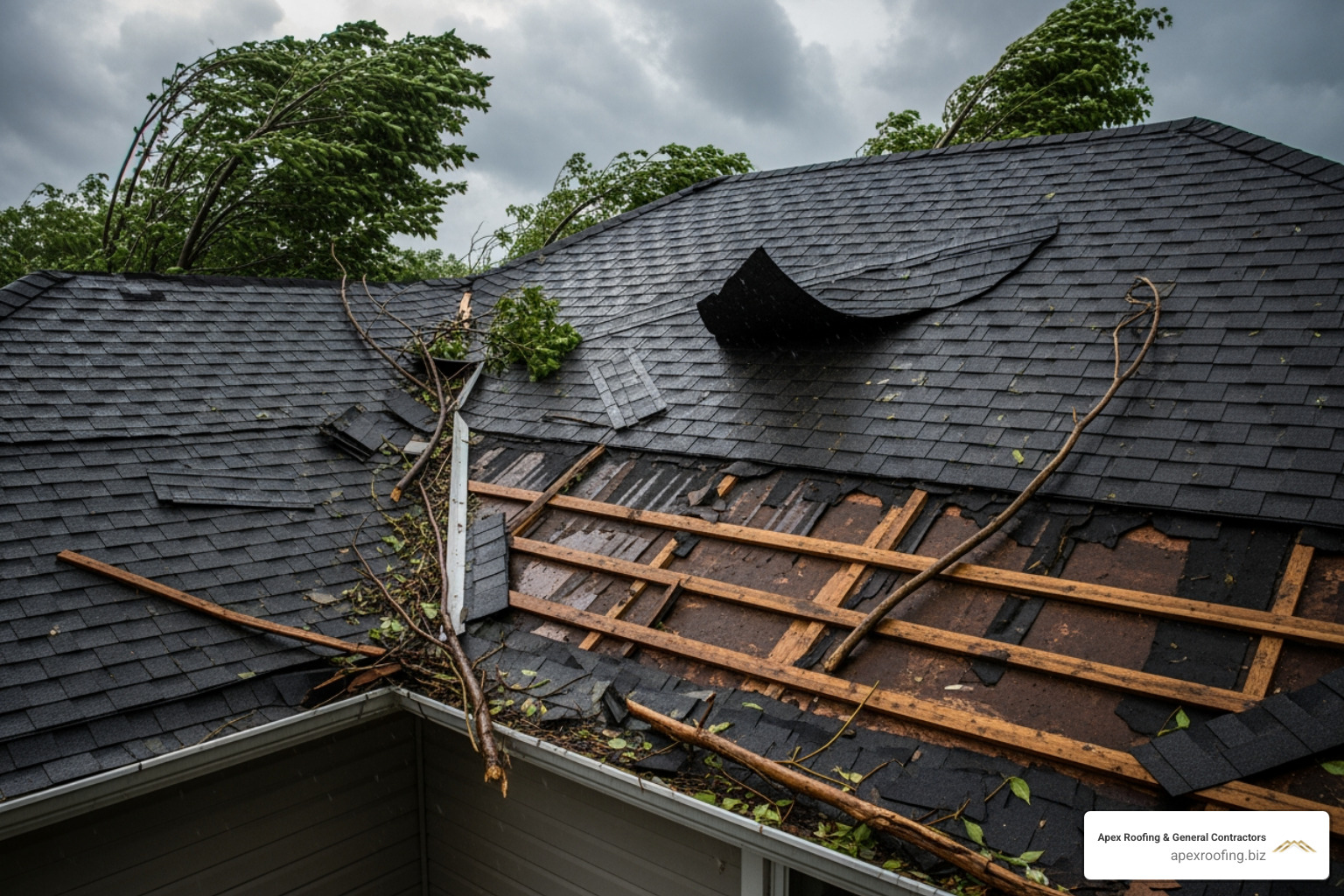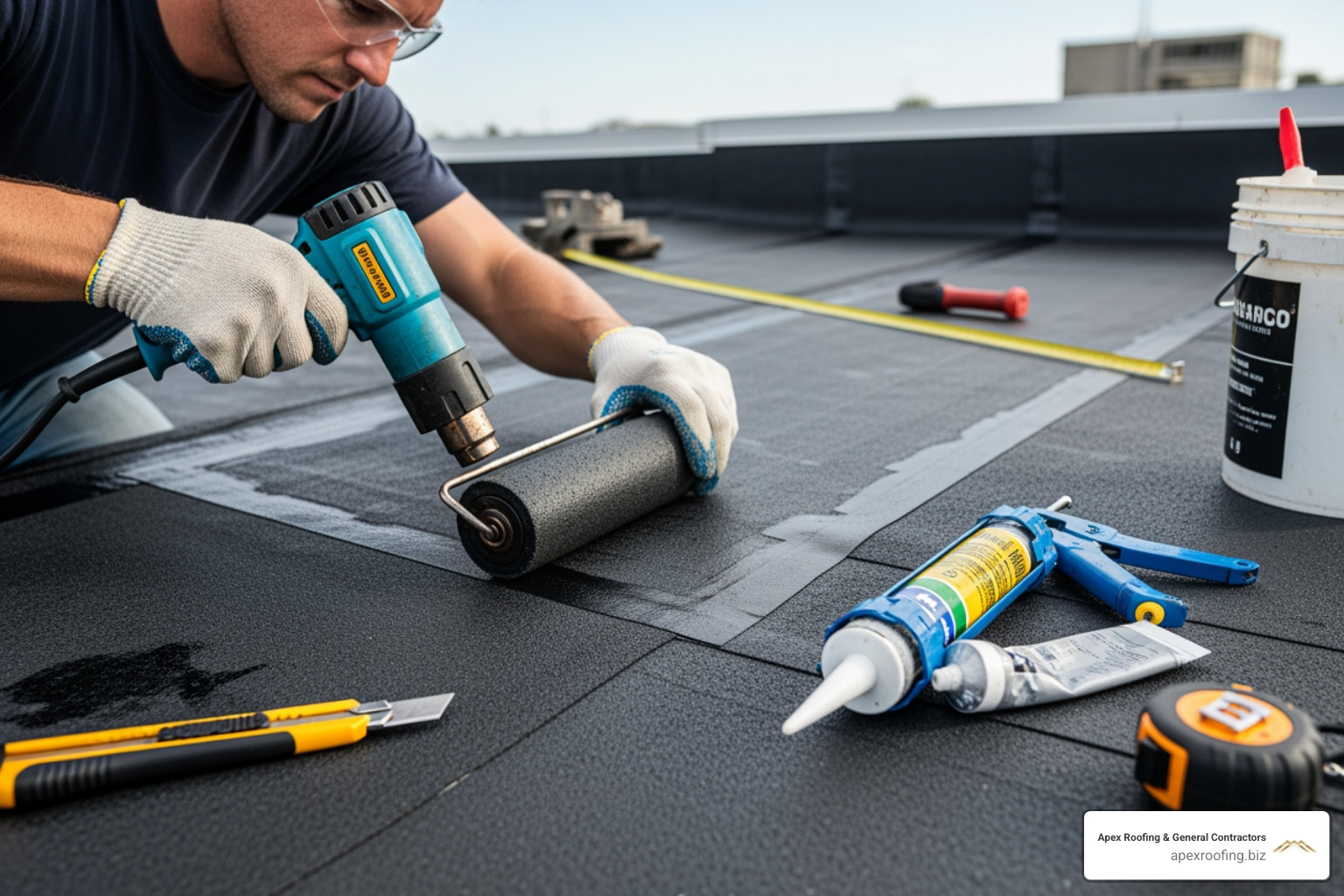Protecting Your San Antonio Home with a Certified Roof Inspector
A certified roof inspector San Antonio is key to protecting your biggest investment. Teaming up with an experienced San Antonio roofing company ensures every square foot of your roof is evaluated and maintained the right way. Why is their certification so important for homeowners in San Antonio?
- Credibility: Certified inspectors have specialized training.
- Accuracy: They can spot issues a regular eye might miss.
- Insurance Help: Their reports are trusted by insurance companies.
- Detailed Reports: You get clear, documented proof of your roof’s condition.
- Peace of Mind: Knowing your home is properly evaluated.
Your home’s roof faces tough challenges. San Antonio weather brings intense sun, sudden hailstorms, and high winds. Small problems can quickly become very expensive. Getting a professional assessment from a Residential Roof Inspection San Antonio TX expert is not just smart – it’s essential for protecting your home. This guide will walk you through everything you need to know about hiring a certified roof inspector in San Antonio.
I’m Carlos Yzaguirre, President and Managing Partner of Apex Roofing & General Contractors. My experience since co-founding Apex Roofing in 2022 focuses on integrity and quality craftsmanship, ensuring top-tier roofing solutions across Texas, including our dedicated team of certified roof inspector San Antonio experts at Apex Roofing & General Contractors. We are committed to combining advanced roofing technology with superior customer service.
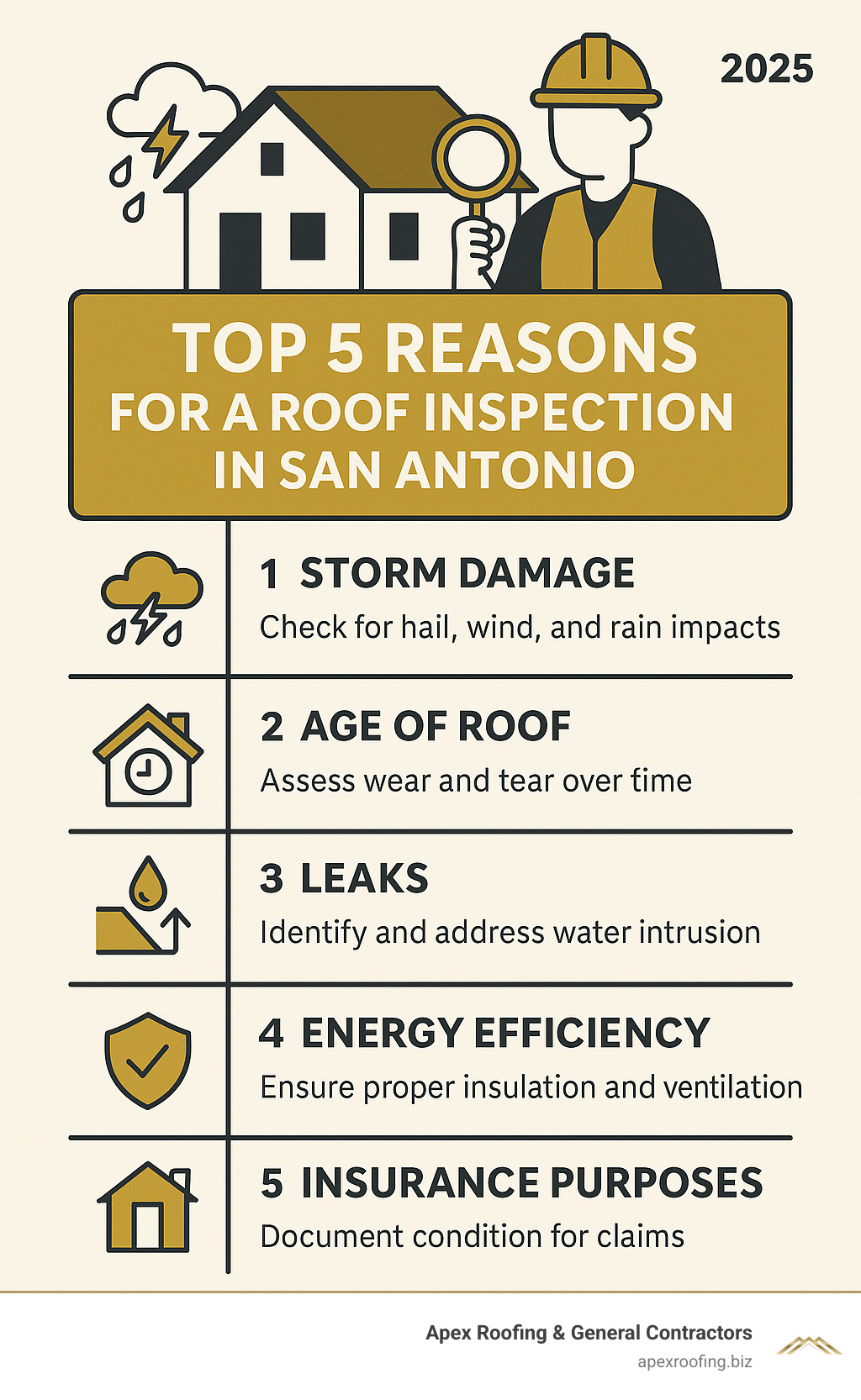
Certified roof inspector San Antonio terms to learn:
Why a Certified Roof Inspector is Your Home’s Best Defense in San Antonio
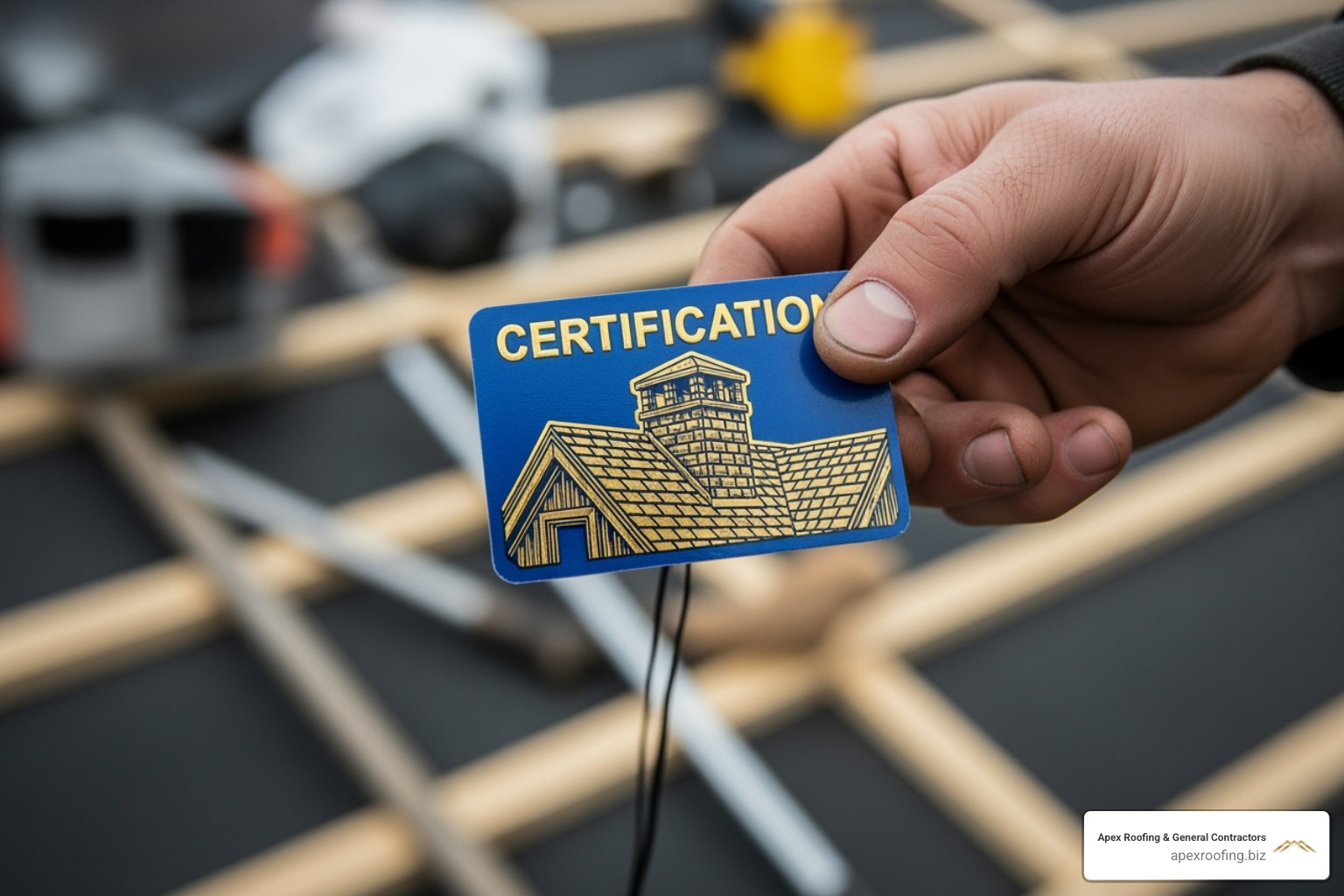
As one of the trusted San Antonio roofing experts serving the Alamo City and the surrounding communities, Apex Roofing & General Contractors understands that your roof shoulders the worst of our harsh climate. From blistering summer rays to sudden hailstorms, it quietly protects everything you value. A certified roof inspector San Antonio gives that guardian the same level of care you would expect from a licensed doctor.
San Antonio’s weather is anything but boring. UV exposure dries out shingles, hailstones bruise them, and powerful gusts can lift whole rows away. Each event weakens the roof a little more until leaks, mold, and higher energy bills follow. A certified inspection stops that domino effect early and helps preserve your home’s value.
The Importance of Certification: Beyond a Basic Look
“Certified” isn’t just marketing fluff. It means the inspector has completed advanced courses and follows strict industry protocols. Many of our pros are Haag Certified Inspectors – training rooted in forensic engineering that teaches them to separate storm damage from normal wear (vital for insurance claims). Others hold credentials with the NRCIA, which emphasizes thorough photo-rich reports and even provides LeakFREE guarantees.
Manufacturer certifications – from names such as Owens Corning or GAF – add another layer of know-how, ensuring the inspector understands the exact installation specs and potential weak points of each product. This constant learning, documented in our Professional Licensing, is what sets a certified inspection apart from a casual glance.
Without that specialized training, subtle cracks, bruised shingles, or failing flashing can be missed – turning a simple repair into a pricey replacement down the road.
San Antonio’s Climate and Your Roof: A Call for Regular Inspections
Blazing sun, hail, high winds, and heavy rain all conspire against local roofs:
- UV degradation makes shingles brittle and prone to cracking.
- Hail marks may look harmless but open pathways for water intrusion.
- Wind uplift breaks the sealant strips, allowing moisture to work underneath.
- Moisture & Mold flourish when drainage is poor or hidden leaks fester.
- Energy loss spikes when insulation and ventilation suffer.
Annual or post-storm inspections from a certified pro – like our team of experts on the Roofers Near Me: San Antonio page – catch these issues before they snowball.
The Roof Inspection Process: What to Expect from a Certified Professional
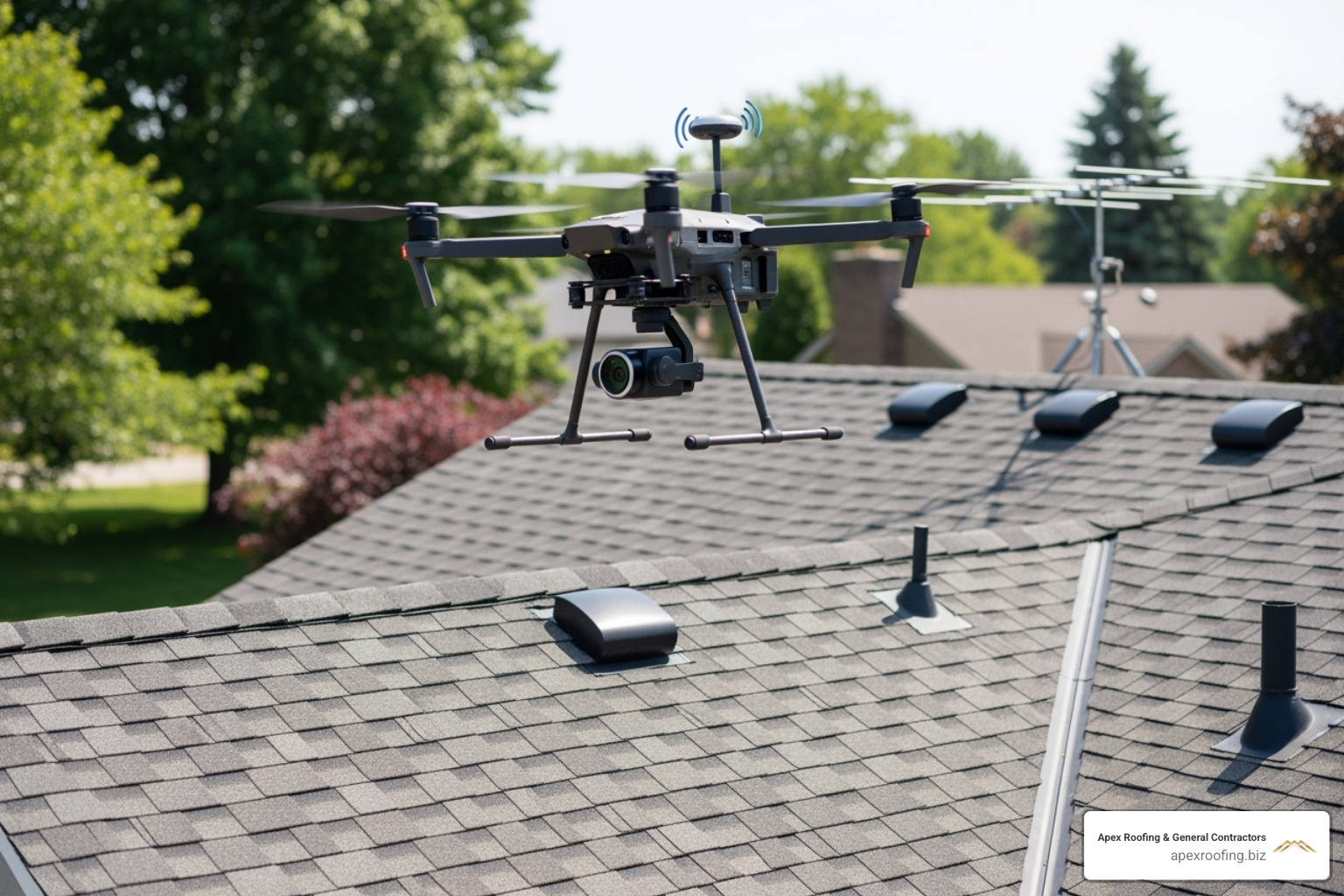
When you hire a certified roof inspector San Antonio, you’re not just getting someone to climb on your roof and take a quick peek. You’re investing in a comprehensive evaluation that brings together expertise, a strong focus on safety, and often, some really cool technology. We believe in being fully transparent, so let’s walk through what a professional roof inspection typically involves.
Our inspectors always put safety first. They use the right equipment and follow strict rules to keep themselves safe and protect your property. While a quick look from the ground can be a starting point, a truly thorough inspection means getting up close and personal. This might be by getting on the roof itself or by using advanced technology.
For those hard-to-reach or unsafe spots, we often use tools like drones. These give us a bird’s-eye view and super clear images, helping us spot issues that might be missed from the ground. Some inspections even use infrared technology. This can find hidden moisture inside your walls or under your roofing materials that you can’t see with your eyes alone. This kind of advanced check gives us a much clearer picture of your roof’s real condition.
Throughout the whole process, you can expect clear communication. Our inspectors will explain what they’re doing, what they’re finding, and answer any questions you have. It’s not just an inspection; it’s also a chance for you to learn more about your home!
When to Schedule Your San Antonio Roof Inspection
Knowing when to schedule a roof inspection is just as important as knowing who to hire. Here’s a look at the best times to get your roof checked out:
We recommend at least one inspection annually. This proactive step helps catch small issues before they turn into big, expensive headaches. Think of it like your roof’s yearly physical exam! Ideally, you might even schedule inspections seasonally (spring/fall). Checking your roof once in late fall (after leaves have dropped but before winter sets in) and again in springtime (after winter weather and before the summer heat) gives you the best preventative care. This way, we can check for any winter damage and make sure your roof is ready for the hotter months.
It’s absolutely essential to get an inspection after severe weather. In San Antonio, that means after any major hailstorm, strong winds, or heavy rains. Even if you don’t see damage from the ground, it’s crucial to have a professional look. Hail damage, especially, can be very subtle and often takes a trained eye to spot. We’ve seen many times where a small dent from hail leads to a leaky roof months later.
If your roof is getting on in years, say 20+ years old, more frequent inspections are a smart idea. As roofs age, they become more prone to damage and wear. An inspection can help you plan for a replacement before an emergency forces your hand.
A certified roof inspection is also incredibly valuable when you’re buying or selling a home. For buyers, it gives a clear picture of the roof’s condition, which can help with negotiations and prevent unwelcome surprises after moving in. For sellers, getting a pre-listing inspection can help you fix any issues upfront, build trust with buyers, and often speed up the sale.
Finally, after any big roof repair or a full replacement, a post-repair verification inspection can confirm the quality of the work. This gives you peace of mind that the job was done correctly and will last.
A Look Inside a Comprehensive Roof Inspection
So, what exactly does a certified roof inspector San Antonio look for during a thorough inspection? It’s a step-by-step process that goes much deeper than just the surface. We typically perform a multi-point inspection that covers several key areas:
First, we do a structural inspection. This means looking for any signs of sagging, unevenness, or damage to the underlying decking and framing. We want to make sure your roof has a strong and stable foundation.
Next comes the material inspection, where we examine the roofing material itself—whether it’s asphalt shingles, metal panels, tile, or a flat roof system. We check many different parts:
- Shingles: We look for any missing, cracked, curling, or blistering shingles, as well as signs of granular loss or if they were nailed improperly.
- Flashing: These are the metal pieces around things like chimneys, vents, and valleys that stop water from getting in. We check to make sure they are sealed correctly and look for rust or damage.
- Gutters: We inspect for clogs, damage, and ensure they have the proper slope and are securely attached. Clogged gutters can cause water to overflow, damaging your fascia and even your home’s foundation.
- Vents: We check that they are installed correctly, aren’t damaged, and that your attic has enough ventilation. Poor ventilation can lead to heat and moisture building up.
- Chimneys: We look for cracks in the brickwork, damaged caps, and proper flashing around them.
- Skylights: We check for any leaks, cracks, and ensure the sealing around the frame is in good shape.
- Attic: We inspect the inside of your attic for signs of leaks (like water stains or mold), proper insulation, and good ventilation. This can reveal problems that aren’t visible from the outside.
- Decking: This is the plywood or OSB sheeting beneath your roofing material. We look for any signs of rot, water damage, or structural issues.
- Sealants: We check all the caulking and sealants around anything that penetrates the roof for cracking, wear, or gaps.
We also evaluate the overall workmanship, looking for any signs of improper installation that could cause your roof to fail sooner than it should. This detailed approach ensures that no stone (or shingle!) is left unturned, giving you a complete picture of your roof’s health.
Understanding Roof Inspection Services and Reports
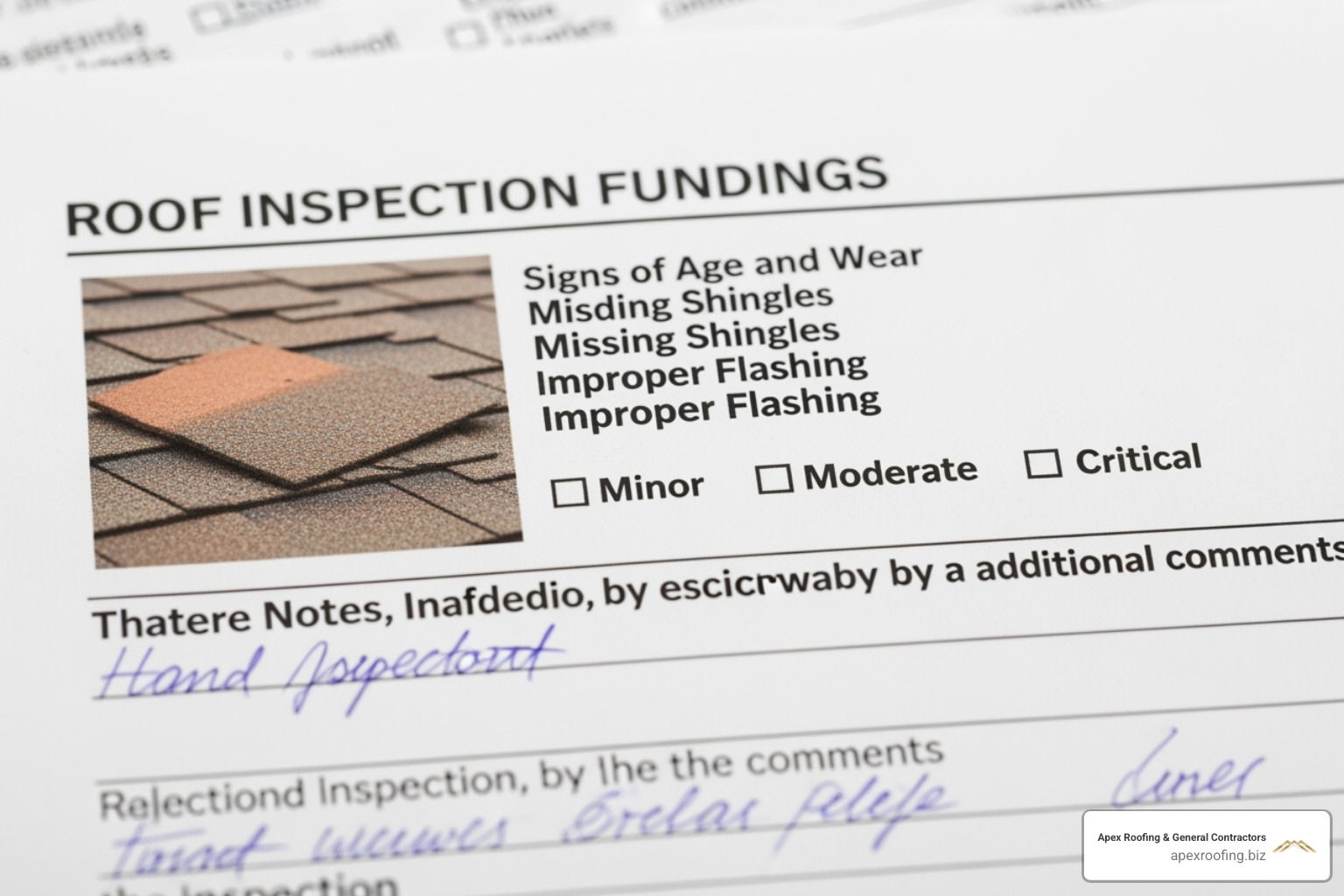
A paid inspection yields a detailed, unbiased document – your roof’s medical chart. It contains photos, explanations in plain English, and clear next steps so you can plan repairs or maintenance with confidence.
Types of Roof Inspections and Typical Costs in San Antonio
- Physical walk-through – the classic, hands-on method.
- Drone survey – ideal for steep or hard-to-reach roofs.
- Infrared scan – detects hidden moisture or insulation gaps.
Prices generally land between $173 and $350+, depending on roof size and the technology used. A basic 17-point check sits on the lower end; comprehensive packages with infrared or drone imagery cost more. (A roofer’s free estimate is a sales tool, not an objective assessment.)
Deciphering Your Certified Roof Inspection Report
Expect:
- Itemized findings with exact locations
- High-resolution photos or drone footage
- Written analysis & priority ratings
- Actionable recommendations (often referencing the most relevant repair solution, such as professional roof repair)
Most certified inspectors deliver the full report within 24-48 hours so you can act quickly.
The Value of a Certified Roof Inspector for San Antonio Homeowners
Hiring a certified roof inspector San Antonio is an investment that pays dividends in multiple ways. It’s not just about finding problems; it’s about securing your financial future, ensuring your family’s safety, and protecting your most valuable asset.
Navigating Insurance Claims with a Professional Report
One of the most significant benefits of a certified roof inspection comes into play when you need to file an insurance claim, especially after San Antonio’s notorious hailstorms or high winds.
- Damage Documentation: A certified report provides irrefutable, detailed documentation of the damage, complete with photographic evidence and expert analysis. This is critical for substantiating your claim.
- Credible Evidence: Insurance companies often prefer and trust reports from certified inspectors (especially Haag-certified ones) because they are trained to distinguish storm-related damage from normal wear and tear. This credibility speeds up the claims process.
- Claim Validation: Your report serves as an independent, unbiased assessment, helping to validate the extent of the damage and ensuring you receive a fair settlement. It prevents disputes over the cause or severity of the issues.
- Adjuster Communication: Having a professional report in hand allows for smoother communication with your insurance adjuster, as you have concrete evidence to back up your claim.
Without such a report, proving the extent of storm damage can be a challenging, frustrating process. A certified inspection provides the solid groundwork you need. For assistance with roof repair and insurance claims, please visit Roof Repair San Antonio.
Gaining an Edge in Real Estate Transactions
Whether you’re buying or selling a home, a certified roof inspection can be a game-changer.
- Buyer Confidence: For prospective buyers, a professional roof inspection eliminates uncertainty. Knowing the true condition of the roof provides immense confidence in their purchase decision and avoids unexpected repair costs after closing.
- Seller Preparedness: If you’re selling, a pre-listing inspection allows you to address any issues upfront. This prevents surprises during the buyer’s inspection, which can delay or even derail a sale. It also demonstrates transparency and good faith to potential buyers.
- Negotiation Tool: For both parties, the report acts as an objective negotiation tool. Buyers can use it to request reasonable repairs or price adjustments, while sellers can use it to justify their asking price or show that their roof is in excellent condition.
- Professional Roofing Certification (PRC): Some certified inspectors offer a “Professional Roofing Certification” (PRC), which can include a transferable warranty (e.g., a 2-year transferable warranty). This is an unprecedented asset in the real estate market, as it provides buyers with long-term peace of mind regarding the roof’s integrity.
- Avoiding Surprises: No one likes unexpected repairs. A certified inspection ensures all parties are aware of the roof’s condition before the transaction is finalized, leading to a smoother closing process.
When selecting an inspector for a real estate transaction, always verify their credentials. You can typically do this through the Texas Real Estate Commission, which licenses home inspectors in Texas. This ensures you’re working with a legitimate and qualified professional.
Frequently Asked Questions about Certified Roof Inspections
What problems do inspectors most often find on San Antonio roofs?
Hail bruises, wind-lifted or missing shingles, cracked flashing, clogged gutters, poor attic ventilation, sun-baked shingles, improper past installations, and the occasional critter damage are the usual suspects.
How long does a roof inspection take?
A focused 17-point review can be finished in about 30 minutes. A full, comprehensive assessment – including attic checks and photo documentation – usually requires 1-2 hours on site, plus similar time back at the office to assemble your report.
Free estimate vs. certified inspection – what’s the difference?
| Free Estimate (Sales Call) | Certified Inspection (Paid) | |
|---|---|---|
| Purpose | Quote for a job | Unbiased health report |
| Scope | Limited to visible damage | Whole roof system |
| Detail & Tools | Minimal | May use drones & infrared |
| Documentation | Brief quote | Formal, photo-rich report |
| Legal Standing | None | Useful for insurance/real-estate |
A certified inspector works for you, not to sell you a project.
Conclusion: Protect Your Investment with a Professional Inspection
Your roof is the primary barrier between your home and San Antonio’s wild weather. A certified inspection now can prevent expensive surprises later and extend the lifespan of your roofing system.
Apex Roofing & General Contractors offers free estimates and certified inspections backed by transparent communication and full code compliance. Contact our local team online to schedule your free estimate and no-obligation inspection today. We look forward to helping you keep your roof and everything under it secure.



